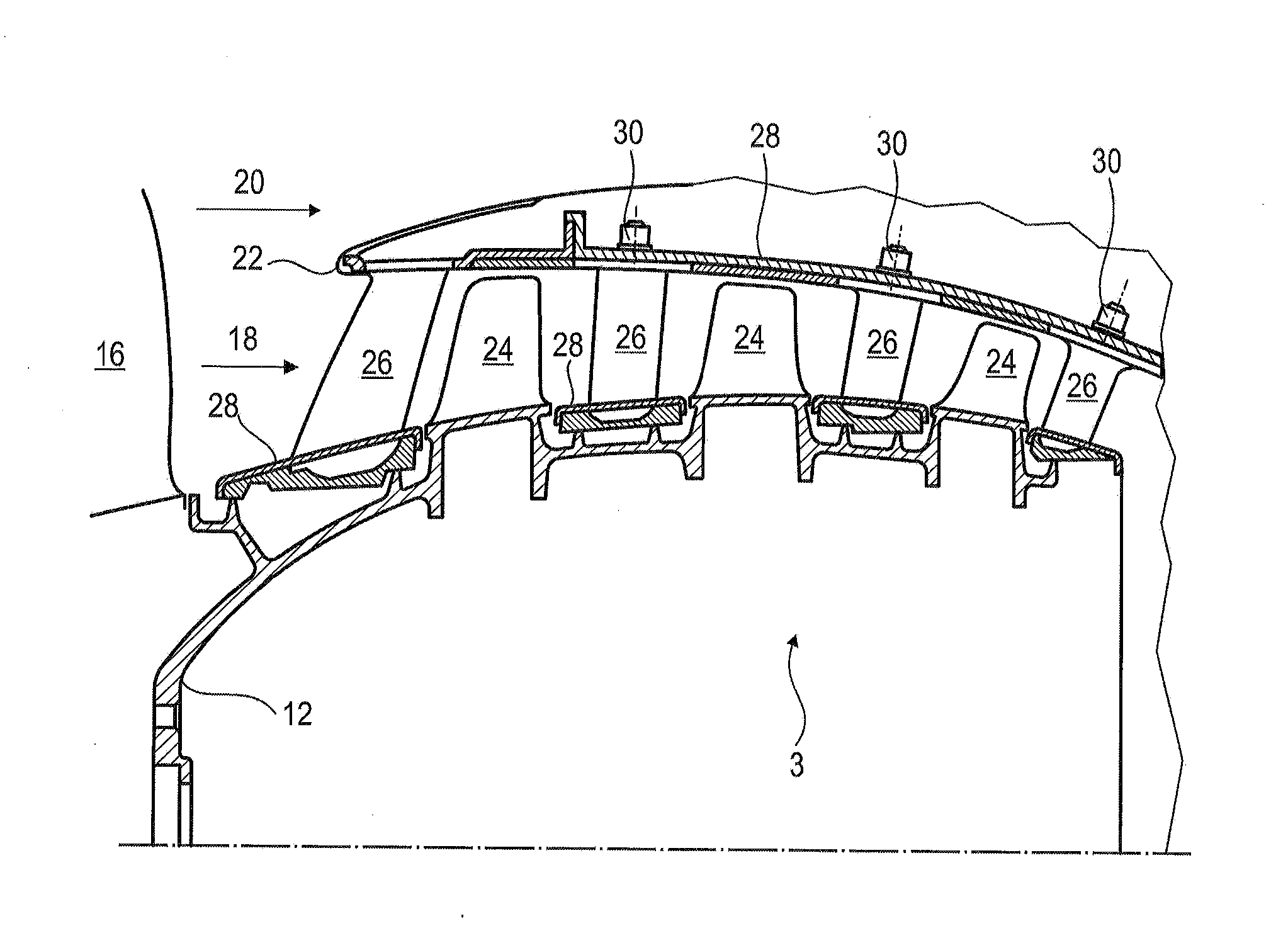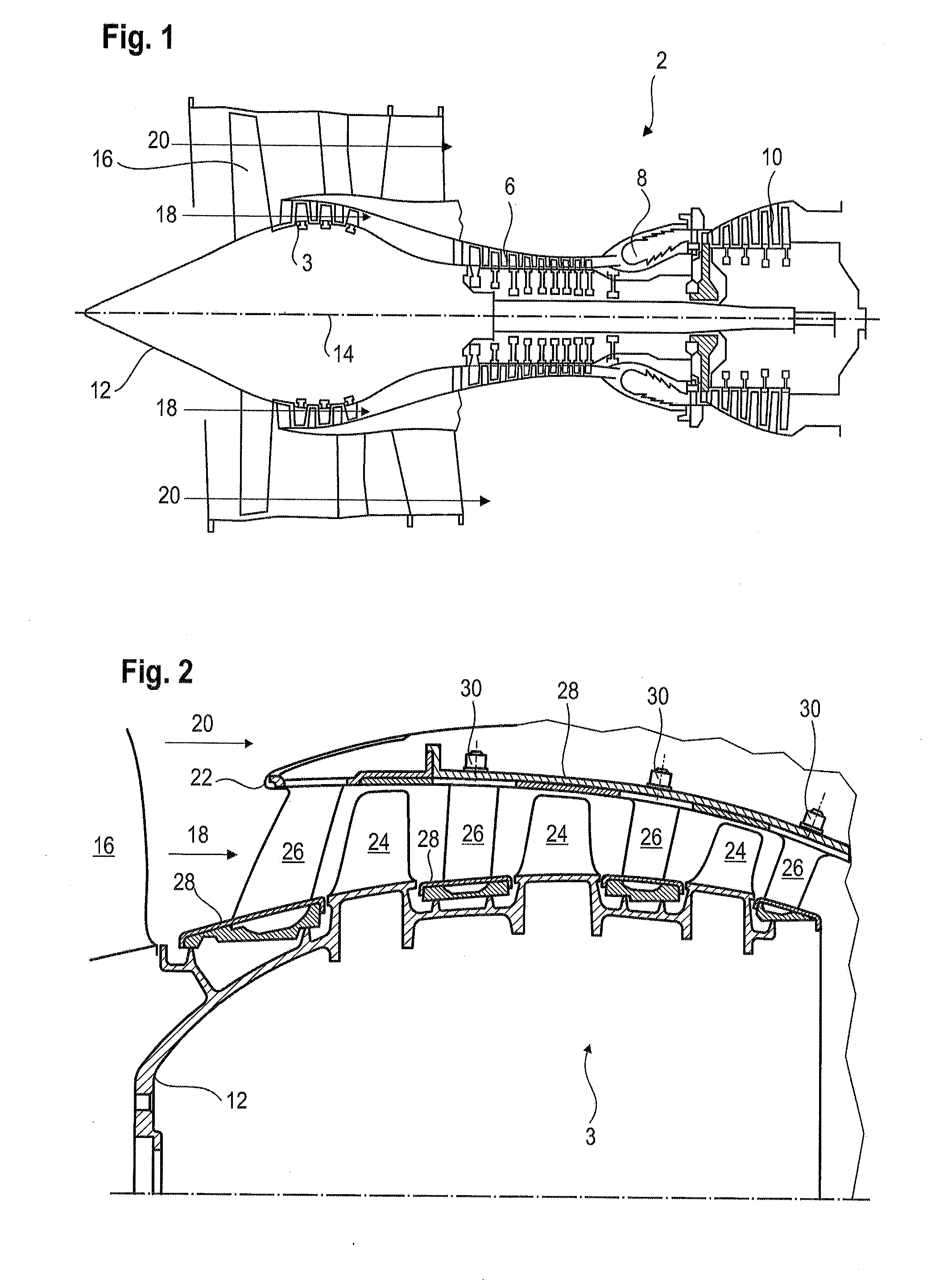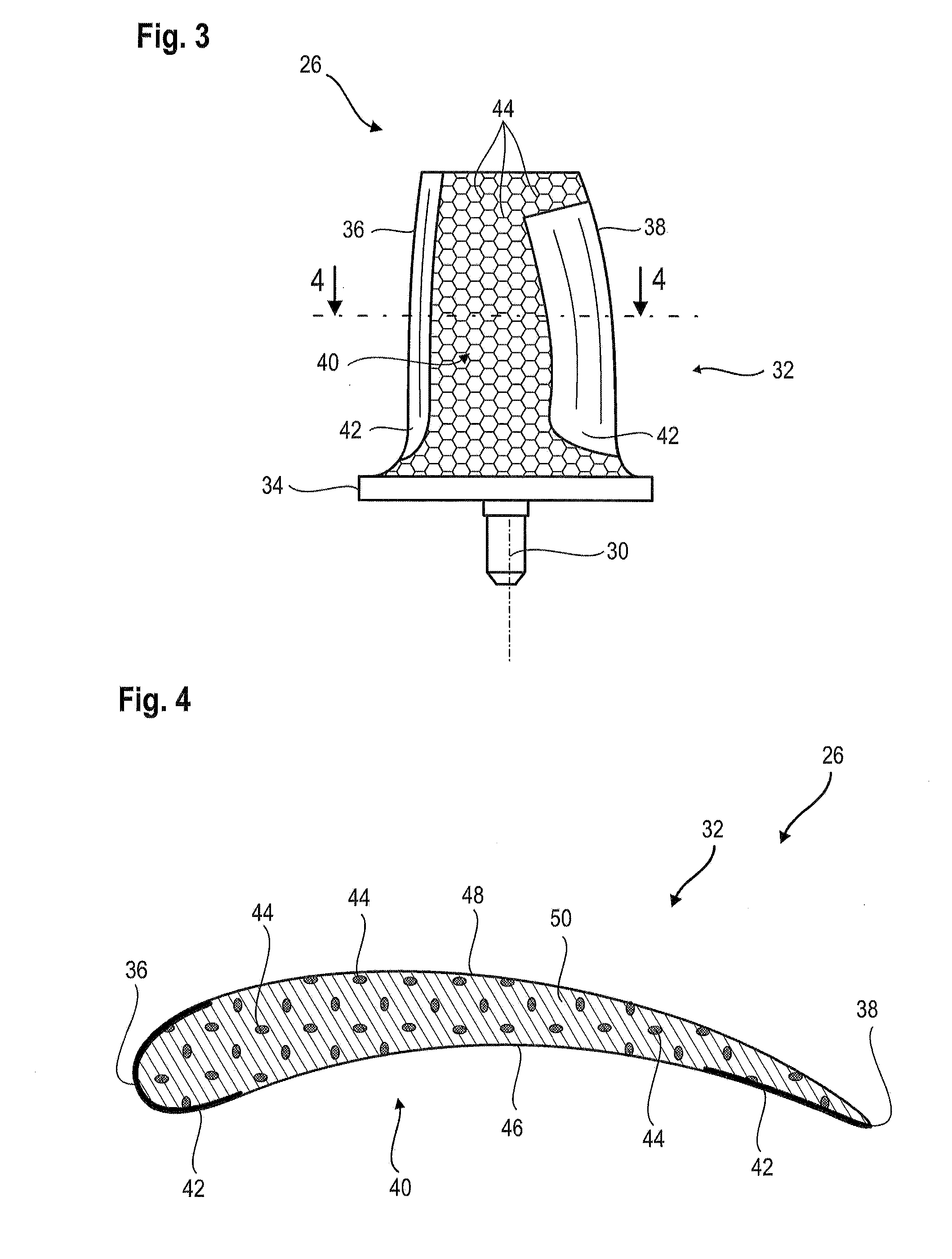Composite Blade Made by Additive Manufacturing
- Summary
- Abstract
- Description
- Claims
- Application Information
AI Technical Summary
Benefits of technology
Problems solved by technology
Method used
Image
Examples
first embodiment
[0079]FIG. 5 outlines a layout of a rod 44 of the reinforcement portion 40 of the blade according to the present application. The orientation of the rods may vary locally.
[0080]The rods 44 are arranged in three non-coplanar directions. The three directions may be inclined relative to each other at different angles. Three directions can be at right angles. The rods 44 then define hexahedra such as cubes whose edges may be inclined relative to the height of the blade.
[0081]The rods 44 are interconnected connecting nodes 52. Connecting nodes are typically divided into three sets of planes 54. Each set of planes 54 comprises parallel planes, the sets 54 being inclined with each other. A connecting node 52 may be connected to six other connecting nodes 52, preferably non-coplanar. The connecting nodes may be arranged on sets of curved surfaces, e.g. concave surfaces generally conforming to the pressure side surface or the suction side surface of the blade.
[0082]The rods 44 generally have...
second embodiment
[0084]FIG. 6 shows an arrangement of the rods 144 of the reinforcement portion 140 of the blade according to the present application. This FIG. 6 shows the numbering of the preceding figures for the same or similar elements, however the numbering is incremented by 100.
[0085]The rods 144 are arranged in four non-coplanar directions, preferably by at least four non-coplanar directions. A connecting node 152 of the rods 144 is connected to four other connecting nodes 152 of rods 144 which form a tetrahedron, whose center can be occupied by the common connecting node. The orientation and length of the rods vary within the reinforcement. The four directions between them define different angles (β1, β2, β3, β4, β5, β6). These angles can be equal.
[0086]According to one alternative of the present application, the reinforcement rods can be arranged in six directions, some branches being coplanar. The rods can form pyramids with a triangular base. In this configuration, a same connecting node...
third embodiment
[0088]FIG. 7 shows a diagram of an iterative method for fabricating a blade according to the present application.
[0089]The blade is made by additional layered manufacturing. The layers may be flat and / or of constant thickness. The blade includes the simultaneous manufacture of its reinforcement and its matrix. The blade is made from layers of filler materials. The filler materials may be applied in molten form or in the form of powders which are subsequently solidified. The cohesion of the powders is achieved by heating the powder, for example using a laser or an electron beam.
[0090]The powders have particle sizes less than 0.50 mm grains. Optionally powders are nano-powders, whose grains have a mean diameter of grains less than or equal to 50 nanometers. The layers forming the reinforcement may have a thickness of less than 0.50 mm, preferably less than 100 μm. The reinforcing layers may be of lower thickness than the matrix layers.
[0091]The iterative process of realization of the ...
PUM
| Property | Measurement | Unit |
|---|---|---|
| Thickness | aaaaa | aaaaa |
| Thickness | aaaaa | aaaaa |
| Thickness | aaaaa | aaaaa |
Abstract
Description
Claims
Application Information
 Login to View More
Login to View More - R&D
- Intellectual Property
- Life Sciences
- Materials
- Tech Scout
- Unparalleled Data Quality
- Higher Quality Content
- 60% Fewer Hallucinations
Browse by: Latest US Patents, China's latest patents, Technical Efficacy Thesaurus, Application Domain, Technology Topic, Popular Technical Reports.
© 2025 PatSnap. All rights reserved.Legal|Privacy policy|Modern Slavery Act Transparency Statement|Sitemap|About US| Contact US: help@patsnap.com



